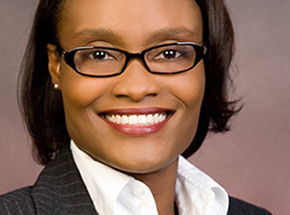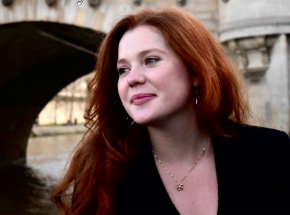- About AUP
- History of AUP
- Mission & Core Values
- Vision and Leadership
- AUP Recognition
- Alumni Success
- Campus Development
- Arts at AUP
- Policies & Guidelines
- Academics
- Undergraduate
- Graduate Programs
- MA in Diplomacy and International Law
- MA in Global Communications
- MSc in Human Rights and Data Science
- MA in International Affairs
- MA in International Affairs, Conflict Resolution, and Civil Society Development
- MSc in International Management
- MSc in Strategic Brand Management
- Find Your Thesis Advisor
- Previous Programs
- Cultural Program
- Faculty
- Summer School
- Research Centers
- The Center for Critical Democracy Studies
- Upcoming Events
- Research Projects
- Fellows’ Publications
- Publishing
- Curriculum
- Community
- Partnerships
- Visiting Scholars
- CCDS Highlights
- Atelier de Théorie Politique – Paris
- Critical Theory 101: Future Directions and New Challenges
- Martti Koskenniemi on “The Law of International Society: A Road not Taken”
- Academic Freedom Symposium
- Tocqueville Colloque 2023
- Violent Turns Conference
- Degenerations of Democracy
- DEMOS21 Inaugural Event
- What Demos for the 21st Century?
- The Paris Centennial Conference
- Justice Stephen Breyer
- Civic Jazz - The Launch of the Center
- Past Events
- FR
- The Center for Writers and Translators
- The George and Irina Schaeffer Center for the Study of Genocide, Human Rights and Conflict Prevention
- The Joy and Edward Frieman Environmental Science Center
- The Center for Media, Communication & Global Change
- The Center for Critical Democracy Studies
- Departments
- Academic Resources
- Academic Affairs
- Academic Calendar
- Academic Resource Center
- Library
- Registrar's Office
- Teaching and Learning Center
- Accessibility & Accommodation Services
- AI@AUP: A Campus-Level Initiative
- Quai D'Orsay Learning Commons
- Paris as Classroom
- ACE
- Admissions
- Student Life
- Campus
- Student Leadership & Involvement
- Paris
- Support Services
- Student Life Help Desk
- Student Accounting Services
- Student Immigration Services
- Student Grievance Procedure
- Diversity and Inclusion
- Health & Well-being
- Digital Student Handbook
- News
- Events
- AUP Giving
- Housing Offer for 2025-2026
- IT Services
- Alumni
- About AUP
- History of AUP
- Mission & Core Values
- Vision and Leadership
- AUP Recognition
- Alumni Success
- Campus Development
- Arts at AUP
- Policies & Guidelines
- Academics
- Undergraduate
- Graduate Programs
- MA in Diplomacy and International Law
- MA in Global Communications
- MSc in Human Rights and Data Science
- MA in International Affairs
- MA in International Affairs, Conflict Resolution, and Civil Society Development
- MSc in International Management
- MSc in Strategic Brand Management
- Find Your Thesis Advisor
- Previous Programs
- Cultural Program
- Faculty
- Summer School
- Research Centers
- The Center for Critical Democracy Studies
- Upcoming Events
- Research Projects
- Fellows’ Publications
- Publishing
- Curriculum
- Community
- Partnerships
- Visiting Scholars
- CCDS Highlights
- Atelier de Théorie Politique – Paris
- Critical Theory 101: Future Directions and New Challenges
- Martti Koskenniemi on “The Law of International Society: A Road not Taken”
- Academic Freedom Symposium
- Tocqueville Colloque 2023
- Violent Turns Conference
- Degenerations of Democracy
- DEMOS21 Inaugural Event
- What Demos for the 21st Century?
- The Paris Centennial Conference
- Justice Stephen Breyer
- Civic Jazz - The Launch of the Center
- Past Events
- FR
- The Center for Writers and Translators
- The George and Irina Schaeffer Center for the Study of Genocide, Human Rights and Conflict Prevention
- The Joy and Edward Frieman Environmental Science Center
- The Center for Media, Communication & Global Change
- The Center for Critical Democracy Studies
- Departments
- Academic Resources
- Academic Affairs
- Academic Calendar
- Academic Resource Center
- Library
- Registrar's Office
- Teaching and Learning Center
- Accessibility & Accommodation Services
- AI@AUP: A Campus-Level Initiative
- Quai D'Orsay Learning Commons
- Paris as Classroom
- ACE
- Admissions
- Student Life
- Campus
- Student Leadership & Involvement
- Paris
- Support Services
- Student Life Help Desk
- Student Accounting Services
- Student Immigration Services
- Student Grievance Procedure
- Diversity and Inclusion
- Health & Well-being
- Digital Student Handbook
- News
- Events
- AUP Giving
- Housing Offer for 2025-2026
- IT Services
- Alumni
Related Links
Faculty
Professor Kurkdjian
Fashion Studies: Media, Communication and Culture
Professor Sophie Kurkdjian
Where were you working before you joined AUP?
I got my PhD in the cultural history of the 20th century from Paris 1 Université Sorbonne. I then became a lecturer at various universities before joining AUP in September 2020. I also work as a researcher at the Institut d’histoire du temps present within the French national center for scientific research (CNRS). There, I developed a research seminar on the social and cultural history of fashion. I’m going to co-present the seminar with Professor Renate Stauss, beginning in 2022.
Your current research covers the history of labor and workers in the fashion industry. Which aspects of this specifically?
I focus much of my work on the social aspects of the industry: questions of immigration as well as labor and garment workers from the end of the 19th century. If you look at the grand couturiers in France at the time, you will see that a lot of them weren’t French; they came from Britain, Greece, Germany or the US. Textile workers in France have also often come from abroad: from Italy, Armenia and Germany after the rise of fascism or from Africa and Asia after the Second World War. Fashion still creates a huge amount of jobs today – often unrecognized textile workers in Bangladesh or across Africa. The industry has this “Made in X” dimension, the idea that the clothes we wear have been produced all over the world.
You co-wrote a book on that topic…
Yes! It’s called Au coeur des maisons de couture. Une histoire sociale des ouvrières de la mode (1880-1950). In the book, I look at the concept of cosmopolitanism, or the “melting pot,” in fashion, exploring the ideas, techniques and know-how that couturiers and textile workers brought with them from across the world. Highlighting the historical role workers played in the fashion industry helps consumers valorize the labor and expertise that go into producing clothes. The idea is to move toward an appreciation of skills and artisanship and away from the glamour of Fashion Week. It’s vital to consider these themes at a time when fast fashion is so prominent and when workers often face dreadful conditions. Students are interested in this approach. Our classes at AUP aim to decentralize fashion studies, moving away from a focus on haute couture and glossy magazines to look instead at workers, work clothes and the independent fashion media. We offer students the chance to lift the curtain and go behind the scenes of the industry.
You have also worked on the geopolitics of fashion. How does this geopolitical approach factor into your teaching?
At AUP, we study global fashion. Fashion has always crossed borders, but today this is more visible because of fast fashion and social media. I teach classes on communicating fashion, fashion journalism, and the history of Paris and its place in global fashion. But we go beyond Paris, so that students begin to deconstruct the idea that fashion is a Western invention. It’s important to train students to look critically at the industry. When people talk about fashion in the West, they often use words like modernity and innovation, but when they qualify fashion in, say, Senegal, they use words like tradition or costume. It’s even more interesting to study global fashion at AUP because we have people in our classes from all over the world. Our students are a great reflection of fashion’s interconnected history.
What does being in Paris add to the study of fashion?
Paris has long been a capital of fashion – even if nowadays it has some competitors! Nevertheless, Paris Fashion Week is still a huge opportunity for politicians to demonstrate soft power. Anne Hidalgo, the mayor of Paris, has developed an advertising campaign for fashion week aimed at tourists and journalists. A few years ago, President Macron organized a dinner for young designers – to which he invited Anna Wintour and the American press. There’s a lot of behind the scenes work at these events – buyers and journalists who attend fashion week are met at the airport. It’s a really precise process designed to improve their experience and make them feel positive about Paris fashion. Students here are witnessing that first hand!
Tell me about your other book, The Geopolitics of Fashion.
French publishing house Editions de Cavalier Bleu have a series called Geopolitique that commissions books on the geopolitics of different subjects – for example, borders or wars. They wanted one on fashion, and I proposed that I take a historical approach. The book starts by looking at the relationship between Paris, which emerged as a fashion capital at the end of the 19th century, and London, Milan and New York, which became more prominent after the Second World War. Fashion has long been valorized because of its economic importance, and clothing trends have often resulted from economic changes. I look at the ways in which fashion has been used to exercise soft power.
What are some of the emerging trends and challenges in the fashion industry today?
In the book, I look at how the model of haute couture, which has long been at the forefront of the industry, is being put into question by prêt-à-porter and fast fashion. Paris, London, Milan and New York are still very important to the luxury sector, but we also have new actors like Zara from Spain and H&M from Sweden. It’s very important to me that students think about the ways in which we consume fashion. Just recently it emerged that certain brands are working with subcontractors that use Uighur slave labor to produce what we wear. We need to make new consumers understand that we can’t go on like that. Sustainability is another huge challenge – nowadays it may be more important than creativity. To be a capital of fashion today, you need to be green.
Related
-

Jacqueline Routier ’94
Alumna
Read MoreJacqueline Routier ’94
Alumna
Marketing is fundamentally about understanding people.
-

Maggie Mixon
Paris as Classroom
Read MoreMaggie Mixon
Paris as Classroom
I now see a classroom on every corner.
-

Pauline Rodhain ’13
Alumna
Read MorePauline Rodhain ’13
Alumna
The knowledge I gained in AUP's classes ten years ago is indispensable in my industry today.
